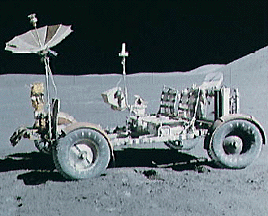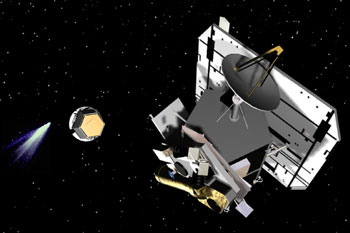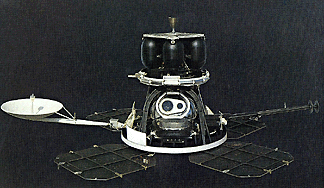Ulysses Instrumentation Page

Image courtesy of NASA/JPL
| Instrument | Acronym | Investigation | Principal Investigator |
|---|---|---|---|
| Vector Helium Magnetometer & Fluxgate Magnometer | VHM/FGM | Magnetic field | A. Balogh, Imperial College, England |
| Solar Wind Observations Over the Poles of the Sun (Solar Wind Plasma Experiment) | SWOOPS | Solar wind plasma | Dave McComas, Southwest Research Institute, USA |
| Solar Wind Ion Composition Spectrometer | SWICS | Solar wind ion composition | J. Geiss, University of Bern, Switzerland, and G. Gloeckler, University of Marlyand, USA |
| Unified Radio and Plasma Wave Instrument | URAP | Radio and plasma waves | Dr. Robert McDowall, NASA Goddard Space Flight Center, USA |
| Energetic Particle and Interstellar Gas Instrument | EPAC/GAS | Energetic paritcles and interstellar neutral gas | E.Keppler, MPAe, Lindau, Germany |
| Heliospheric Instrument for Spectra, Composition, and Anisotropy at Low Energies | HISCALE | Low-energy ions and electrons | L.J. Lanzerotti, Lucent Technology, USA |
| Cosmic Ray and Solar Particle Instrument | COSPIN | Cosmic rays and solar particles | R.B.McKibben, University of Chicago, USA |
| Gamma Ray Burst Instrument | GRB | Solar x-rays and cosmic gamma-ray bursts | K. Hurley, UC Berkely, USA and M. Sommer, MPE, Germany |
| Cosmic Dust Experiment | DUST | Cosmic dust | E. Grun, MPK, Germany |
| Coronal Sounding Experiment | SCE | Coronal sounding | M.K. Bird, University of Bonn, Germany |
| Gravitational Waves Experiment | GWE | Gravitational waves | B.Bertotti, University of Pavia, Italy |
Last modified January 29, 2001 by Jennifer Bergman.














